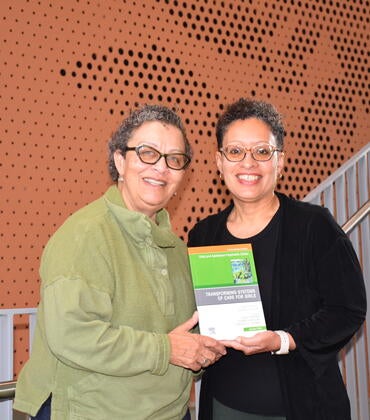
Alzheimer’s disease, the most common cause of dementia among the elderly, is characterized by plaques and tangles in the brain, with most efforts at finding a cure focused on these abnormal structures. But a University of California, Riverside, research team has identified alternate chemistry that could account for the various pathologies associated with the disease.
Plaques and tangles have so far been the focus of attention in this progressive disease that currently afflicts more than 5.5 million people in the United States. Plaques, deposits of a protein fragment called beta-amyloid, look like clumps in the spaces between neurons. Tangles, twisted fibers of tau, another protein, look like bundles of fibers that build up inside cells.

“The dominant theory based on beta-amyloid buildup has been around for decades, and dozens of clinical trials based on that theory have been attempted, but all have failed,” said Ryan R. Julian, a professor of chemistry who led the research team. “In addition to plaques, lysosomal storage is observed in brains of people who have Alzheimer’s disease. Neurons — fragile cells that do not undergo cell division — are susceptible to lysosomal problems, specifically, lysosomal storage, which we report is a likely cause of Alzheimer’s disease.”
Study results appear in ACS Central Science, a journal of the American Chemical Society.
An organelle within the cell, the lysosome serves as the cell’s trashcan. Old proteins and lipids get sent to the lysosome to be broken down to their building blocks, which are then shipped back out to the cell to be built into new proteins and lipids. To maintain functionality, the synthesis of proteins is balanced by the degradation of proteins.
The lysosome, however, has a weakness: If what enters does not get broken down into little pieces, then those pieces also can’t leave the lysosome. The cell decides the lysosome is not working and “stores” it, meaning the cell pushes the lysosome to the side and proceeds to make a new one. If the new lysosome also fails, the process is repeated, resulting in lysosome storage.
“The brains of people who have lysosomal storage disorder, another well-studied disease, and the brains of people who have Alzheimer’s disease are similar in terms of lysosomal storage,” Julian said. “But lysosomal storage disorder symptoms show up within a few weeks after birth and are often fatal within a couple of years. Alzheimer’s disease occurs much later in life. The time frames are, therefore, very different.”
Julian’s collaborative team of researchers in the Department of Chemistry and the Division of Biomedical Sciences at UC Riverside posits that long-lived proteins, including beta-amyloid and tau, can undergo spontaneous modifications that can make them undigestible by the lysosomes.
“Long-lived proteins become more problematic as we age and could account for the lysosomal storage seen in Alzheimer’s, an age-related disease,” Julian said. “If we are correct, it would open up new avenues for treatment and prevention of this disease.”
He explained that the changes occur in the fundamental structure of the amino acids that make up the proteins and are the equivalent of flipping the handedness of the amino acids, with amino acids spontaneously acquiring the mirror images of their original structures.
“Enzymes that ordinarily break down the protein are then not able to do so because they are unable to latch onto the protein,” Julian added. “It’s like trying to fit a left-handed glove on your right hand. We show in our paper that this structural modification can happen in beta-amyloid and tau, proteins relevant to Alzheimer’s disease. These proteins undergo this chemistry that is almost invisible, which may explain why researchers have not paid attention to it.”
Julian explained these spontaneous changes in protein structure are a function of time, taking place if the protein hangs around for too long.
“It’s been long known that these modifications happen in long-lived proteins, but no one has ever looked at whether these modifications could prevent the lysosomes from being able to break down the proteins,” he said. “One way to prevent this would be to recycle the proteins so that they are not sitting around long enough to go through these chemical modifications. Currently, no drugs are available to stimulate this recycling — a process called autophagy — for Alzheimer’s disease treatment.”
The research was done in collaboration with Byron D. Ford, a professor of biomedical sciences in the School of Medicine. The findings could have implications for other age-related diseases such as macular degeneration and cardiac diseases linked to lysosomal pathology.
“This collaboration between laboratories in our distinct research fields provides us a unique opportunity to explore novel mechanisms and potential treatment targets for Alzheimer’s disease and other neurodegenerative disorders,” Ford said.
Julian and Ford were joined in the research by Tyler R. Lambeth (co-first author), Dylan L. Riggs (co-first author), Lance E. Talbert, Jin Tang, Emily Coburn, Amrik S. Kang, Jessica Noll, and Catherine Augello.
Next, the team will examine the extent of the protein modifications in human brains as a function of age. The researchers will study brains of people with Alzheimer’s disease as well as of people not afflicted by it.
Grants from the National Institutes of Health supported the study.



